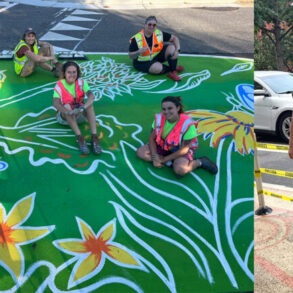
There’s a common misconception about the art business that states that, within the industry, there are essentially no rules. True, it’s a vast and murky marketplace with few regulations, but to succeed as an artist within it has often meant, for many, following quite a number of rules. Chief among them is showing up. There are exhibition openings and lunches and galas; there are cocktail hours and auctions and vernissages; there are V.I.P. previews and panels and dinners that last the length of a Frederick Wiseman documentary.
Participation in these events isn’t compulsory, but it can feel that way. As much as the art world says it values risk takers, it doesn’t always reward them. Yet some have charted a different path, finding that there are even greater rewards in sidestepping the rules, in simply saying, “No.” This week, for T’s annual Art issue, we’ll be looking at a small group who represent the art world’s true iconoclasts, those who reject the social trappings of the art business — and in some cases, the business itself — and for whom the power of no has opened doors and led to new possibilities.
They’ve also created their own mythologies. The subjects of the five stories we’ll be publishing starting today and continuing through Oct. 4 have all become figures of fascination for declining to do what’s expected of them. This includes David Hammons, who for many years refused to show in commercial galleries, choosing to install his work instead in empty lots and public parks. (You may have seen a Hammons work without even realizing it, especially if you’ve spent much time in New York in the last 50 years.) There’s also Ryan Trecartin and Lizzie Fitch, arguably the most important artists of digital culture in the past 20 years, who became contemporary art stars only to walk away from fame in favor of building a large compound in rural Ohio, where they now live and work. Also featured are such renegade artists as Judy Chicago and Meredith Monk, who, years before Trecartin and Fitch, rebuffed the notion that an artist must live in New York, Los Angeles or some other major city in order to be successful, creating a much quieter life for themselves in the high desert of New Mexico. Then there’s the extreme performance artist Tehching Hsieh, who stayed in New York but approached it almost as an alien landscape. He’s best known for his yearlong artworks that he made in the city in the late ’70s and early ’80s (he once spent 12 months living inside a cage in his TriBeCa loft), but his most radical act was likely when he announced in 1999 that he would stop making art. Unlike many creative people who swear they’re going to retire, he’s stuck to that promise ever since. And finally, we look at perhaps the most elusive of all living artists, Cady Noland, who’s spent much of the last 25 years rejecting interview offers and photo requests, not to mention the exhibition and sale of her work. In recent years, she has made a return to the art world, participating in exhibitions in Frankfurt and at Gagosian gallery in New York, navigating a career as a high-profile artist while also remaining, for all intents and purposes, invisible.
This post was originally published on this site be sure to check out more of their content







